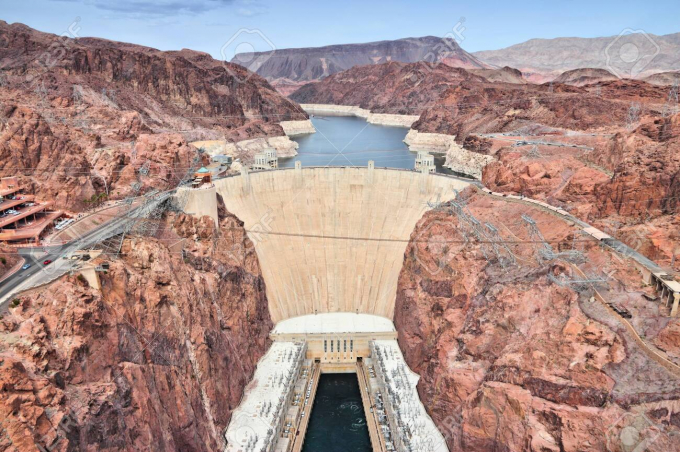November 28, 2025 | 04:15 GMT +7
November 28, 2025 | 04:15 GMT +7
Hotline: 0913.378.918
November 28, 2025 | 04:15 GMT +7
Hotline: 0913.378.918

Hoover dam in United State- hydroelectric power station on the border of Arizona anhd Nevada. Photo: ST
On Aug. 9, the United Nations Intergovernmental Panel on Climate Change (IPCC) reaffirmed what many of us already know: Climate change is accelerating, and aggressive action must be taken to stem the tide of this impending global catastrophe.
The report stated that severe climate impacts in the form of droughts, wildfires, floods and superstorms are already upon us and will intensify if we do not act immediately. The report, which was compiled by 234 scientists relying on over 14,000 peer-reviewed studies, is a “code red for humanity.”
The report specifically calls out methane as a key contributor to the crisis and suggests "strong, rapid and sustained reductions'' of emissions to prevent further damage. Methane emissions from human activity account for about 25 percent of all global warming. Quickly reducing methane is our best opportunity to reverse the terrifying trajectory of the climate crisis, before additional tipping points are triggered. That is why we can’t rely on building more hydropower dams.
Though purported by some to be a clean energy source, hydropower dams create huge amounts of methane. In fact, nearly 80 percent of the greenhouse gas emissions from water storage reservoirs created by dams are methane, which is over 86 times more potent than carbon dioxide in accelerating climate change over a decade or two, a critical time period in efforts to mitigate the impacts of climate change before it is too late.
Dams and reservoirs create ongoing methane releases often fueled by microbes feeding on flooded vegetation. Scientific research shows that a hydropower facility can cause more warming in its first few years than a coal-fired power plant. And when reservoirs experience fluctuations in water levels — say during a megadrought — it increases the amount of released methane previously held in the deeper parts of the water into the atmosphere. Furthermore, the construction of new dams, which use large quantities of cement and concrete, is itself a significant source of methane emissions.
But methane is not the only concern with hydropower. It’s the dams themselves that are the problem. The structures ruin ecological habitats by literally standing in the way of fish migration. The reservoirs that dams create raise water temperatures, which in turn reduce oxygen and devastate fish populations. Dams also trap silt and other nutrients, which would otherwise nourish downstream habitats as nature intended.
Reservoirs and dams can rapidly increase freshwater evaporation, which would be a problem in any climate, but is especially troublesome given the historic megadrought that continues unabated in the American West.
What’s more, dams do not impact all communities equally. Rather, the burden is often thrust onto Native American tribes and other frontline communities. Be it diverted waterways and negatively impacted fisheries, rises in methylmercury levels, or culturally significant lands flooded to create a reservoir, hydropower is indeed a matter of environmental justice.
And that does not even begin to factor in the unsuitable physical conditions of dams. Approximately 2,000 dams in the U.S. are in need of repair. Over two-thirds of all dams in the U.S. have passed or are nearing their expiration date. It’s time we stop throwing good money at bad.
(The Hill)

(VAN) A new study reveals how the simultaneous effects of ocean acidification, salinity and loss of oxygen are making the world more fragile.

(VAN) Hopes are growing that the creation of the first 3D turkey gut model could be a turning point in the battle against the virulent blackhead disease.

(VAN) Tyson, America’s biggest meat supplier, plans to shutter one of its largest beef processing plants as the industry continues to struggle with low cattle supplies and political pressure from Washington.

(VAN) New FAO study shows how digital solutions are empowering farmers and fishers to prevent losses and build resilient agrifood systems.

(VAN) Brazil's COP30 presidency pushed through a compromise climate deal on Saturday that would boost finance for poor nations coping with global warming but that omitted any mention of the fossil fuels driving it.

(VAN) Poultry farmers in the UK have been warned that they could face one of the worst winters yet for bird flu.

(VAN) Prices of main-crop paddy have risen sharply, with jasmine rice hitting 16,100 baht per tonne — the highest level in years.